The mountain sheep, also known as “argali,” is a species of wild sheep that lives in Asia. This species is the largest wild sheep in the world.
There are nine different subspecies of mountain sheep that live in various areas across their range. Both males and females have horns, but the horns of males are larger. Read on to learn about the mountain sheep.
Description of the Mountain Sheep
These massive sheep stand up to 4 ft. tall at the shoulder, and grow up to 7 ft. long. Adult males are larger than females, and can weigh over 700 lbs. The largest subspecies is the Marco Polo sheep, which grows nearly six feet long on a regular basis.
Their fur ranges in color by individual and subspecies. Some are cream colored, while others are reddish brown or grey.
Interesting Facts About the Mountain Sheep
These widespread sheep have a number of unique adaptations for survival. Even the various subspecies have interesting traits and behaviors. Learn more below.
- Mountain Master – If their name didn’t give it away, this species lives in mountainous regions. They often inhabit areas higher than 3,000 ft. above sea level. Like many goats and sheep, their hooves are rubbery, which gives them better grip on the rocky cliffs in which they live.
- Dangerous Battles – When you live on the edges of cliffs and mountainsides, life can be quite difficult. These sheep take life on the edge a step further. When males want to show dominance, they ram each other with their curled horns.
- Dangerous Play – Even when they aren’t battling, life for mountain sheep is dangerous. Despite the danger, young lambs play with one another on the cliff sides. Play actually helps the lambs learn how to navigate in their dangerous home.
Habitat of the Mountain Sheep
These sheep live in the unforgiving habitat of mountain peaks. They rarely stray below 3,000 ft. above sea level, and often live much higher. During the winter, they live lower on the mountain to avoid climate extremes.
As spring and summer arrive, they move higher into the peaks to avoid predators. They rely on the extreme cliffs and rugged terrain to stay ahead of predators.
Distribution of the Mountain Sheep
Different subspecies live in different areas. They range all throughout central Asia, and their populations vary based on the region. Populations live primarily in China, Mongolia, Kazakhstan, Kyrgyzstan, and Tajikistan. In some regions, their range is extensive and unbroken, while in other regions their populations are more fragmented.
Diet of the Mountain Sheep
Like most sheep, this species is herbivorous and eats plants. Their habitats do not have many trees or shrubs, but there is a variety of vegetation for them to feed on, and they are not picky.
Their primary foods are grass, sedges, flowering plants, and herbs. The specific plants that they eat vary based on the season and availability.
Mountain Sheep and Human Interaction
Humans hunt these sheep heavily, and this impact varies from region to region. Some subspecies are incredibly rare, while others are more widespread and common. The IUCN lists the species as a whole as Near Threatened, primarily because of hunting and habitat loss for farming.
Farming poses another hurdle in the competition for food with livestock. Even though domestic animals do not directly harm the mountain sheep, they do eat their food and spread disease.
Domestication
Humans have not domesticated this sheep species in any way. Scientists believe that the mouflon is the original descendant of our domestic sheep breeds.
Does the Mountain Sheep Make a Good Pet
No, mountain sheep do not make good pets. These sheep are much larger than their domestic counterparts, and they are quite dangerous when provoked. There are many different breeds of domestic sheep to choose from instead.
Mountain Sheep Care
Just like for the ibex, zoos try to replicate the mountain sheep’s wild habitat as closely as possible. Their enclosures have a number of places to climb and hide. They reside in small herds the zookeepers can separate into different groups if necessary.
Zookeepers feed mountain sheep a variety of hay, as well as pelleted sheep food. This ensures the animals receive all the proper nutrients and vitamins.
Behavior of the Mountain Sheep
Herds of mountain sheep range in size, and groups can number up to 100 individuals. Outside of the breeding season, the herds are generally all male or all female. They are also quite docile outside of the breeding season, and fighting is minimal.
Most of their feeding and activity occurs during the day, making them diurnal. As breeding season arrives, males fight with one another for dominance and breeding rights.
Reproduction of the Mountain Sheep
The strongest males collect herds of females, known as “harems.” He protects his harem from other males, and breeds with all the females. However, the male does not participate in the rearing of the young.
After about a gestation period of about five months, the female gives birth to one or two lambs. The female weans the lambs when they are about four months old, and they become independent shortly after.


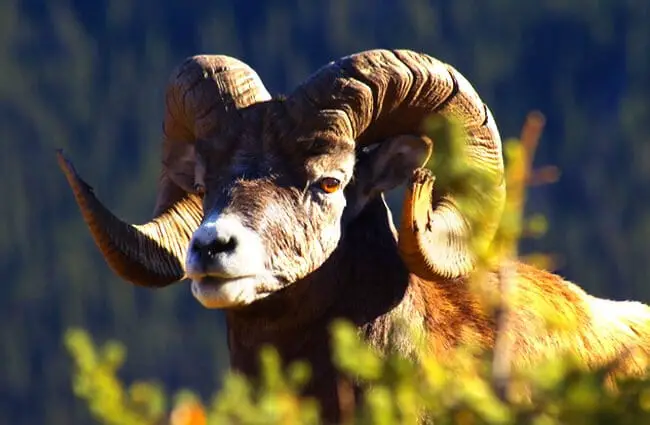

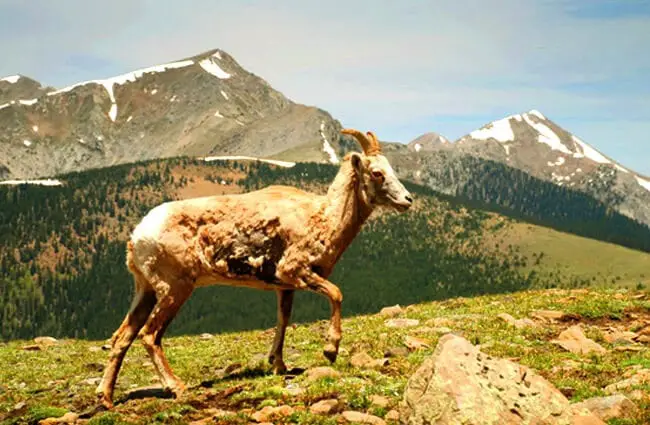

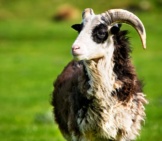
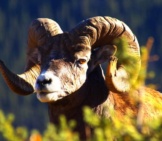
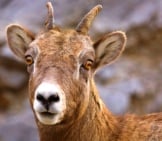

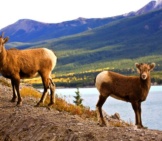
![Red Angus Closeup of a beautiful Red Angus cowPhoto by: U.S. Department of Agriculture [pubic domain]https://creativecommons.org/licenses/by/2.0/](https://animals.net/wp-content/uploads/2020/03/Red-Angus-4-238x178.jpg)












![Red Angus Closeup of a beautiful Red Angus cowPhoto by: U.S. Department of Agriculture [pubic domain]https://creativecommons.org/licenses/by/2.0/](https://animals.net/wp-content/uploads/2020/03/Red-Angus-4-100x75.jpg)

